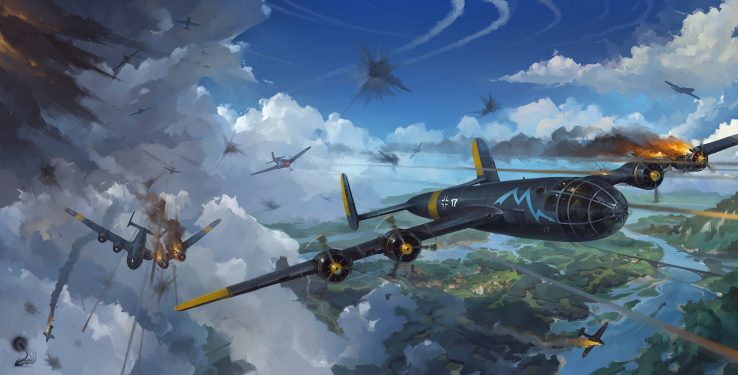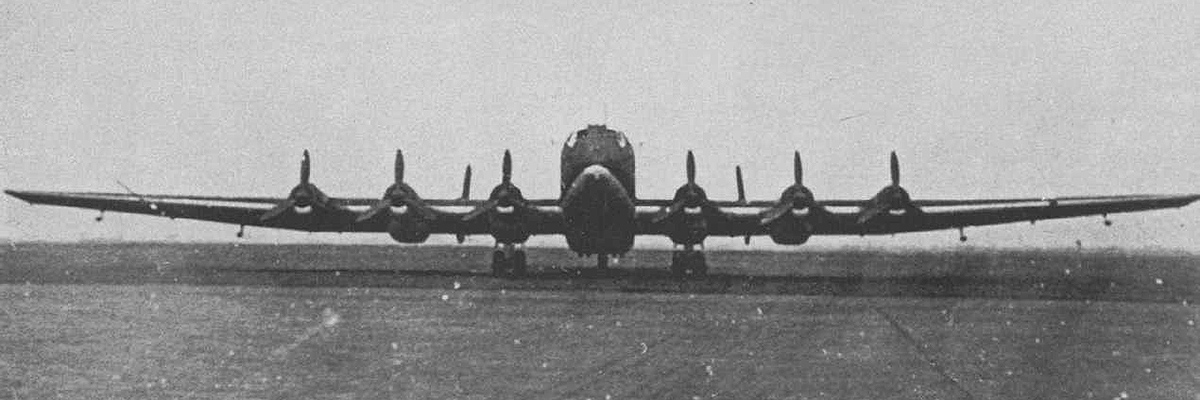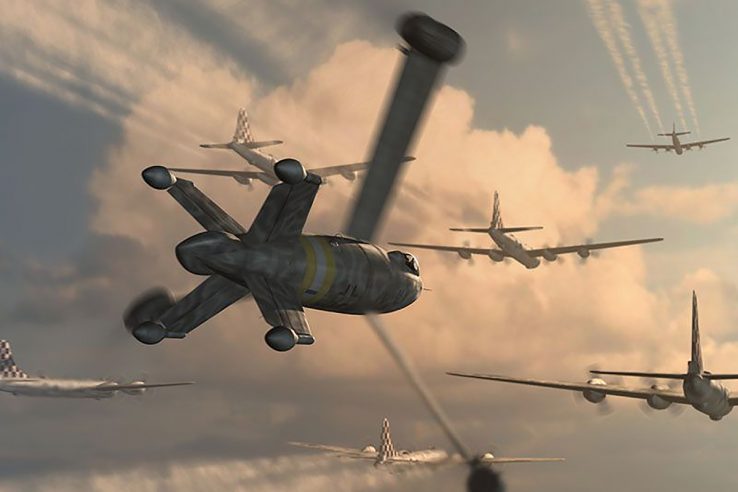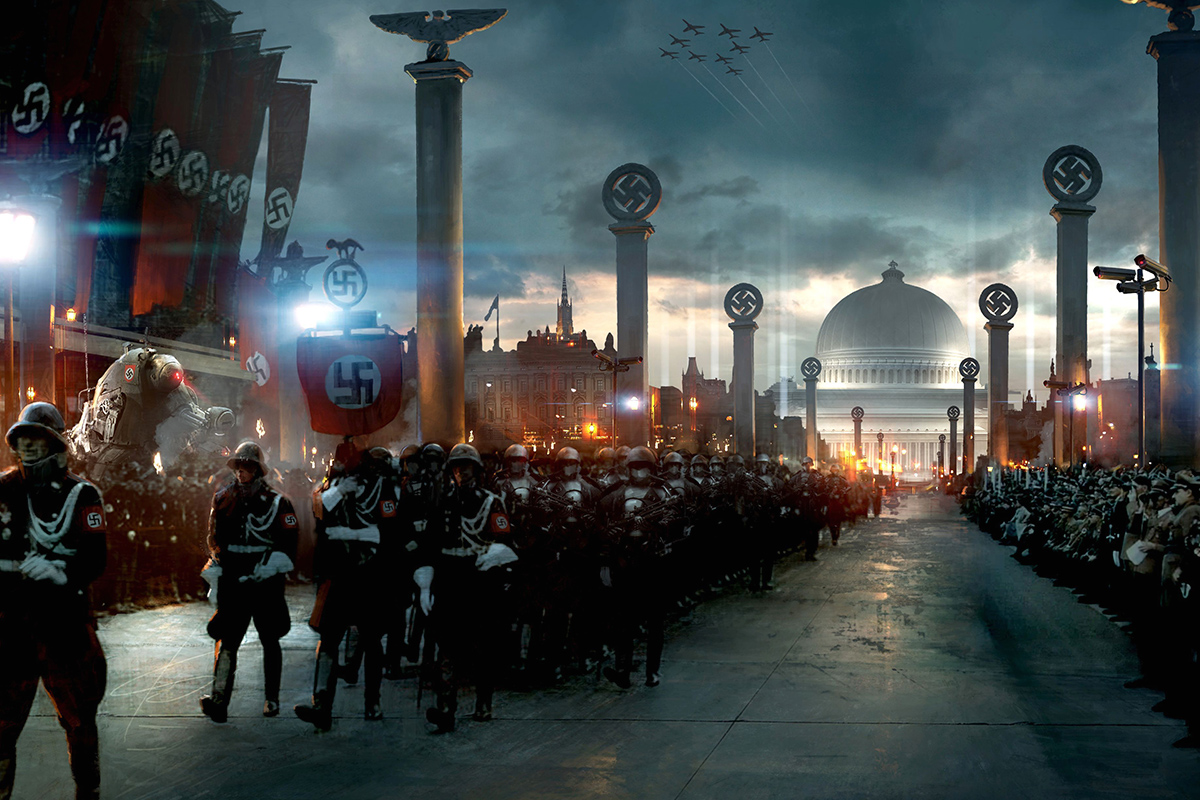Did you know many of the strange German warplanes we see in dieselpunk are based on real designs?
As World War II drew to a close in Europe, Nazi Germany rushed the development of advanced bombers and fighter jets in a final effort to stop the Allies. From the world’s first operational turbojet fighter to a flying wing, some of these technologies were so far ahead of their time that Allied commanders speculated the Germans could have turned the tide of the war if only they had managed to prolong it by a few months.



Horten Ho IX
The best-known of Germany’s strange aircraft must be the Horten brothers’ flying wing.
Walter (1913-98) and Reimar Horten (1915-94) had virtually no formal training in aeronautics, yet they came up with some of the most innovative aircraft designs of the twentieth century.
The Horten Ho IX (also known as the Ho 229 and as the Gotha Go 229 after the Gothaer Waggonfabrik where it was built) was a favorite of Luftwaffe chief Hermann Göring. Originally construed as a bomber, his Air Ministry ordered the addition of two 30mm cannons so it could be used as a fighter as well.

The first Ho IX flew on March 1, 1944, followed by another test flight in December 1944. Göring ordered forty aircraft built at Gotha. The program was accelerated after the Allies crossed the Rhine in March 1945, but production was too slow. The only flying wing ever readied for combat was promptly captured by the Americans. It is now stored at the Smithsonian National Air and Space Museum’s Paul E. Garber Restoration Facility in Suitland, Maryland.
Of course, that doesn’t stop dieselpunk from imagining what could have been.
Various alternate World War II video games feature Horten-style flying wings, including War Front: Turning Point (2007), Blazing Angels 2: Secret Missions of WWII (2007) and Wolfenstein: The New Order (2014).




Revell sells model kits of the Ho IX with box cover art by Egbert Friedl.
Stuart Jennett’s concept art for the horror movie Panzer 88 features a similar flying wing. Not sure if that movie will get made, though, it appears to have been in development hell for years.



Other flying wings
Messerschmitt, one of the largest aircraft builders of the Third Reich, designed their own flying wing, the Me P.08.01, in 1941. It never made it off the drawing table.
Indiana Jones and the Raiders of the Lost Ark (1981) has a flying wing, but it’s smaller than the Horten brothers’. Given that the movie is set in (an alternate) 1936, it must be a different plane altogether.


Hydra’s flying wing in Captain America: The First Avenger (2011) clearly takes its inspiration from the real thing, but it is many times larger. It has two massive jet engines as well as eight flying bombs stuck in the back, whose propellers help lift the plane.
The designer, Daniel Simon, has more at his website.

For the Amerika Bomber (more on that later), the Arado company proposed the Arado E.555. It came in several versions, the most notable of which mounted six jet engines on top of a flying wing. Revell sells a model kit of this version.


A similar plane appears in the 2008 video game Turning Point: Fall of Liberty. It is set in a world where Winston Churchill died in 1931, Britain is defeated and the Nazis have launched an invasion of the continental United States.
Messerschmitts Me 262 and 270
Another weapon the Germans bring to America in Turning Point: Fall of Liberty is the Messerschmitt Me 270, a successor to the real-world Messerschmitt Me 262. It was the first operational jet-powered fighter aircraft in history.


Engine problems prevented the Me 262 from entering World War II until 1944. Although it was faster and better armed that its American and British counterparts, by that point it was too late to have an impact on the war.
Henschel Hs 132
The Henschel Hs 132 was designed as a dive bomber and interceptor to counter the Allied invasion of Europe. Its unique design featured a top-mounted jet engine and a cockpit completely faired into the fuselage contour, with the pilot in a prone position, bearing a remarkable resemblance to the contemporary Heinkel He 162.
The Luftwaffe ordered six prototypes. Only three were built before the war’s end.
Amerika Bomber
The Amerika Bomber project was one of the most ambitious advanced aviation initiatives of the Third Reich. It sought to obtain a long-range bomber for the Luftwaffe that could strike the continental United States.
Messerschmitt submitted the Me 264.




The Horten brothers proposed a bigger version of their flying wing, called the H.XVIII, with six turbojets.

The most exotic design by far was the Silbervogel (“Silver Bird”), a rocket-powered sub-orbital bomber dreamed up by Eugen Sänger and his wife, Irene Bredt. It would have been shot into the stratosphere, cross the Atlantic at a speed of 5,000 kilometers per hour, drop its bombs over America and then land in Japan.


The design that was ultimately chosen was a more conventional one: the Junkers Ju 390.
But it has an interesting story! It is claimed — and disputed — that at some point in 1944, one of the prototypes made a transatlantic flight to within twenty kilometers of the American East Coast.

Focke-Wulf Triebflügel
The Triebflügel was designed by Focke-Wulf as a vertical takeoff and landing interceptor to defend important industrial sites that had no or only small airfields.
Rather than wings, the Triebflügel had a rotor/propeller assembly that functioned much like a helicopter on liftoff and like a propeller in horizontal flight.




The Triebflügel was never built, but something like it appears in Captain America: The First Avenger (2011), called a “Parasit”. The designer, Daniel Simon, has more at his website.
Nazi Concorde
Philip K. Dick’s The Man in the High Castle features a German supersonic jet that is similar to the Anglo-French Concorde, which first flew in 1969. (The Man in the High Castle is set in 1962.)
In the Amazon TV series (our review here), the airliner is only a little different from the real plane. The cockpit windows are larger, the tail is straight, not curved, and the German version appears to have only two doors in the front. The real Concorde had two in the back as well. (See Supersonic Jets That Weren’t)









1 Comment
Add YoursThe usual, though always fascinating story with Nazi ‘Miracle Weapons’, too little, too late, and too expensive. And thank heavens!